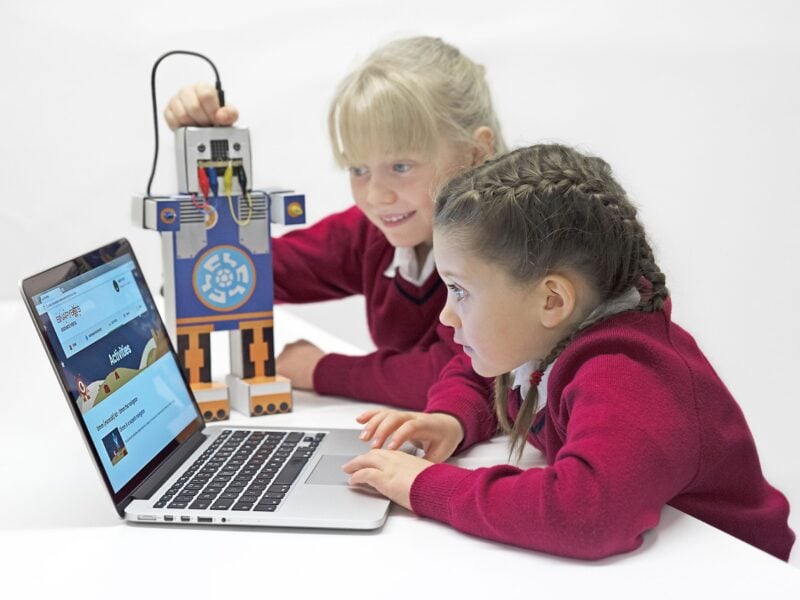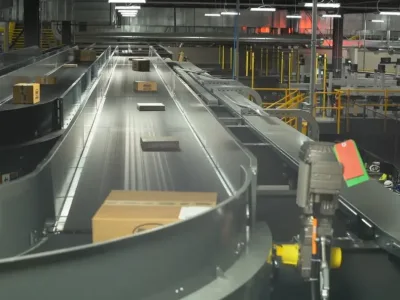
Addressing the digital skills gap with computational thinking
Nevertheless, we are seeing a growing awareness in education of the need for the current curriculum to change to equip young people for the future. This has led to a new focus on what children are being taught and the approaches that should be taken when teaching them.
The evidence to support this change is there – the “Future of Jobs” report by the World Economic Forum, published in 2018, states that the skills deemed important for school leavers entering the workforce are already changing considerably and 35% of skills valued in 2005 will have changed by 2020. Creativity, critical thinking and complex problem solving are increasingly sought after, over and above traditional subject-based knowledge. This reflects a change in job type, already happening in the market and driven by the pace of development in intelligent buildings, smart cities and the Internet of Things which are creating new roles and jobs for current and future school leavers.
Jeannette Wing, former head of the Computer Science Department at Carnegie Mellon University in the USA, sees computational thinking as the key. Jeanette believes that computational thinking should be added to every child’s analytical ability, enabling them to formulate and solve problems, design systems, and understand human behaviour using concepts that are fundamental to computer science. In the UK this has been recognised, and the Department for Education has mandated that some level of computational thinking be taught at all grades from nursery to college, exposing every schoolchild to computational concepts so that it becomes second nature to embrace the approach in whatever discipline they operate in moving forward.
Making the change we need is mission critical. Computational thinking is an essential part of addressing this growing digital skills gap that exists across the globe and many economists, business leaders, politicians and other key figures have highlighted how organisations are already changing the way they identify talent and develop their workforce of the future. The challenge for today’s educators is to help schoolchildren prepare for the new working economy, in turn, helping to prevent a major skills gap in the workforce of the future.
In some parts of the world such as Finland, educators are moving away from imparting knowledge on a subject basis to teach and develop skills that specifically relate to logical thinking, problem solving and computational thinking. Children and young people are being encouraged to work collaboratively, to identify a problem, to break it down into manageable parts and to generate workable and effective solutions that apply to real-world scenarios.
Of course, the skills gap issue should not only be seen solely in terms of the digital economy. While globally the digital skills gap has attracted headline figures, in recent years there has been an increased focus on the more general issue of developing problem solving and creativity skills across the entire workforce and not just those people who want to work in the technology sector.
Ironically, the increased availability and acceptability of advanced technology could be accused of creating a generation that is incapable of solving problems on their own. A reliance on smartphones, google, voice assistants, and ‘apps for everything’ has created a generation reliant on these ready-made tools. Something must be done.
The role of physical computing
As the Development Distributor, Premier Farnell is committed to supporting the development of the next generation of engineering and, in turn, the future of the industry, but we believe this requires far more than creating a generation of coders. We believe that a crucial piece of the computational thinking jigsaw is physical computing – allowing interaction with systems or objects from the physical world using programming. We want to see powerful, yet easy to use, tools placed into the hands of students from very early ages to teach them key skills and open their minds to the potential opportunities of a career not just in electronics but crucial for all jobs in the future, thus ensuring that a generation of school-leavers are armed with the digital skillsets that will be essential for survival in the modern world.
Experience has shown that physical computing creates a link to the ‘real world’ and makes teaching far more relevant. The ‘magic’ of physical computing can be seen when groups of schoolchildren are tasked with solving a problem. The combination of making something real, in teams, and using physical computing to facilitate the process produces staggering results not only in terms of effective learning but also in skills development. When this philosophy is applied using physical computing platforms such as the BBC micro:bit, Raspberry Pi and Arduino, it provides students with a way to develop these competencies in a highly creative and collaborative way. In short, physical computing allows children and students to venture into the real world with complex problem solving based around technology, also helping to break the cycle of ‘ready-made’ technology’ and taking them from being mere consumers of technology to becoming creative thinkers capable of developing brand new dynamic solutions.
With physical computing students learn that not all solutions to problems are readily available and that they must and can develop something unique themselves. Physical computing provides a piece of the jigsaw puzzle of problem solving – others pieces could be to physically create a working model or create a business case for a particular solution – but physical computing is key to allowing children to solve problems related to their own environments. It also allows teachers to engage students with real world solutions, enhancing a range of key skills.
The process of using a basic educational ‘computer’ to create something new enables students to learn about the physical hardware, interact with software, and learn about how they can influence their environment rather than just observing. Students can work on elements that form the basis of the Internet of Things, they can connect devices and carry out meaningful analysis, and experience shows that they become genuinely enthused when they create something themselves that has a practical application in the real world. The essential and important output of this learning is the development of computational thinking skills through the way they have approached the problem they have been tasked to solve.
Students have considered: what is the problem? how can it be solved? and how can the solution be executed? And most importantly – what went wrong and how do I improve it? This approach takes students away from pure computer science and moves them into the realm of real-world applications that could relate to sports technology, biology, geography, mathematics and much more.
Today there are a range of platforms and projects available that help develop computational thinking skills and develop as they progress from pre-school to post-university. A range of boards, coding environments, accessories and projects can be used to support learning, helps students build skills and develop their understanding. Educational resources are now tailored with teachers and students in mind and contain a road map that range from first steps for pre-school through to complex technical solutions for professional development. For example, Key Stage 3 children could learn to programme with a BBC micro:bit and then apply the device in a more advanced way to program a robot as they work through secondary school.
Premier Farnell is working closely with many countries on national roll-outs of physical computing solutions, but there is still a very long way to go. We are keen to send a strong message to electronics industry, governments across the globe, and educators in the classroom about the benefits of applying physical computing to develop computational thinking.
The tools already exist, we must now work together to develop practical ways that we can provide students with the tools and engage teachers and learning professionals, so students can begin to develop the necessary skills to equip them for the future.
About the author:
By Jonathan Smith, Head of Education at Premier Farnell and Farnell element14 – www.farnell.com
 If you enjoyed this article, you will like the following ones: don't miss them by subscribing to :
eeNews on Google News
If you enjoyed this article, you will like the following ones: don't miss them by subscribing to :
eeNews on Google News



